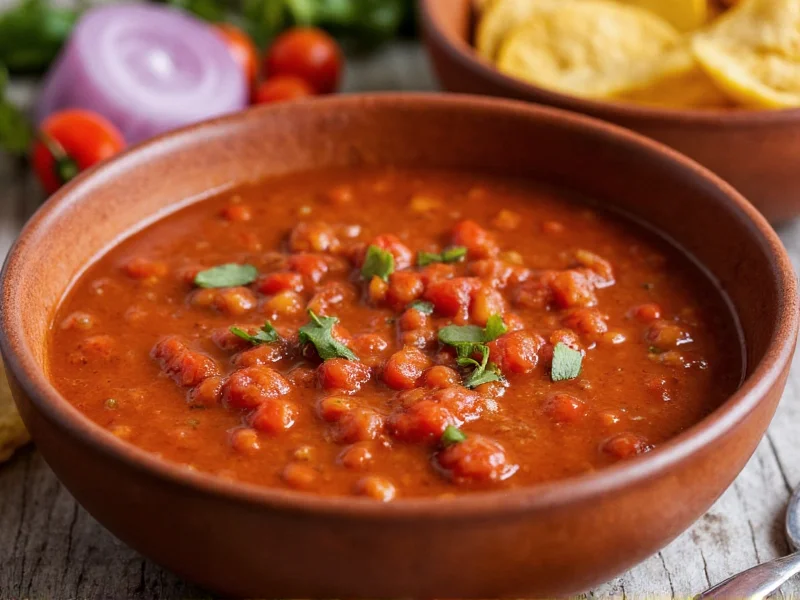When standing in the grocery aisle staring at salsa options, many shoppers wonder: is mild salsa hotter than medium? The straightforward answer is no—mild salsa contains fewer spicy ingredients like jalapeños or habaneros compared to medium varieties. Understanding this heat hierarchy prevents unpleasant surprises when dipping your chips.
How Salsa Heat Levels Actually Work
Salsa manufacturers follow a standard heat progression:
| Heat Level | Scoville Units Range | Common Ingredients |
|---|---|---|
| Mild | 0-1,000 | Green bell peppers, minimal jalapeños |
| Medium | 1,000-5,000 | Jalapeños, some serranos |
| Hot | 5,000-30,000 | Habaneros, cayenne peppers |
This standardized scale aligns with the Scoville Heat Unit system, which measures capsaicin concentration. Mild salsa typically registers below 1,000 Scoville units, while medium ranges between 1,000-5,000 units. The jump from mild to medium represents a significant increase in actual heat intensity.
Why People Confuse Mild and Medium Salsa Heat
Several factors contribute to the mild salsa vs medium heat confusion:
- Labeling inconsistencies - Some regional brands use non-standard terminology
- Culinary terminology overlap - In coffee or tobacco, “mild” indicates stronger flavor
- Personal heat tolerance - What feels “hot” to one person may seem mild to another
- Ingredient variations - Two “medium” salsas might use different pepper ratios
Food scientists note that is medium salsa hotter than mild remains one of the most frequently searched salsa-related questions, indicating widespread consumer confusion about heat labeling standards.
How to Choose the Right Salsa Heat Level
Consider these practical tips when selecting salsa:
- Check ingredient lists - More jalapeños or habaneros means higher heat
- Look for Scoville ratings - Progressive brands now include actual heat measurements
- Consider your dish - Mild works for delicate recipes, medium for balanced flavor, hot for bold applications
- Test small batches - Sample before committing to large quantities
Professional chefs recommend starting with mild salsa if you're unsure, then gradually working up to medium. You can always add heat with fresh peppers, but you can't remove it once incorporated. This approach prevents the common mistake of using medium salsa when mild was intended.
Regional Variations in Salsa Heat Standards
While national brands maintain consistent heat levels, regional producers sometimes deviate from standard classifications. In Texas, for example, “mild” might pack more heat than California's “medium.” Always check for regional indicators on packaging when comparing mild versus medium salsa heat levels.
Food safety experts confirm that proper heat labeling helps consumers with dietary restrictions make informed choices. Misunderstanding is mild salsa hotter than medium could lead to uncomfortable reactions for spice-sensitive individuals.
Final Clarification on Salsa Heat Levels
The hierarchy remains consistent across reputable manufacturers: mild represents the least spicy option, medium offers moderate heat, and hot delivers significant spice. When someone asks why is mild salsa not hotter than medium, the answer lies in standardized industry labeling practices designed to help consumers make predictable choices.
Is there any scenario where mild salsa could be hotter than medium?
No, by standard industry definitions, mild salsa always has less heat than medium. Any exception would indicate improper labeling or a non-standard product that doesn't follow conventional heat classifications.
How can I tell if a medium salsa is actually mild?
Check the ingredient list for pepper types and quantities. Brands using fewer jalapeños or removing seeds/membranes can create medium-labeled salsas with milder heat. Some progressive brands now include Scoville ratings for precise measurement.
Does the color of salsa indicate its heat level?
Not reliably. Red salsas often use ripe jalapeños which can be milder, while green salsas frequently contain raw jalapeños which might be hotter. However, color alone doesn't determine heat level—always check the label for “mild,” “medium,” or “hot” designation.
Can I convert mild salsa to medium at home?
Yes, you can increase mild salsa's heat by adding minced jalapeños (with seeds for more heat), a dash of cayenne pepper, or hot sauce. Start with small amounts and taste as you go, as it's easier to add heat than to reduce it once incorporated.
Why do some medium salsas taste milder than others?
Heat perception varies based on multiple factors including pepper variety, growing conditions, seed content, and additional ingredients that can counteract spice. Two medium-labeled salsas might use different pepper ratios or include cooling elements like avocado or dairy that affect perceived heat.











 浙公网安备
33010002000092号
浙公网安备
33010002000092号 浙B2-20120091-4
浙B2-20120091-4